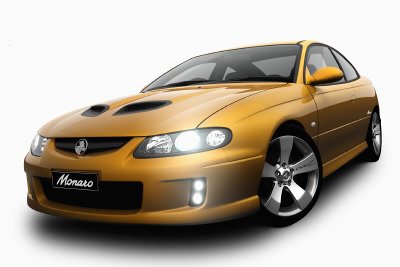|
NEWS ROAD TESTS |

|
 SHOP ON-LINE AT OPTICAL AND HEARING |
|
NEWS ROAD TESTS |

|
 SHOP ON-LINE AT OPTICAL AND HEARING |
 The final Monaro model is the CV8X (pictured above). Monaro production will end later this year. |
|
26th August, 2005 (7:30 AM) Over the years, employment opportunities in the automotive manufacturing industry (like other industries) has both increased and decreased. Today will see Holden announce changes to its employee numbers. GM Holden Ltd has made a decision to reduce the workforce size of its South Australian operations to protect its future in Australia. The company has indicated it will respond to global business conditions, increasing competition from imported brands and changes to local and export projections for coming years.
26th August, 2005 (1 PM) GM Holden Ltd will reduce its South Australian operations by 1,400 positions by mid-2006 in order to protect its future in Australia and support its business plans. The company is responding to global business conditions, increasing competition from imported brands and changes to local and export projections for coming years. GM Holden has determined the third shift introduced in the Elizabeth vehicle manufacturing operations in 2003 is no longer wholly sustainable. Daily production will be gradually revised from its current level of 800 cars to about 620 cars, equivalent to its 2003 rate prior to the introduction of the third shift. GM Holden Chairman and Managing Director, Denny Mooney, today said the decision was incredibly difficult but the right one to ensure GM Holden remained Australia’s biggest carmaker. “We need to act because the local and export markets are changing and the third shift is no longer wholly sustainable,” Mr Mooney said. “We’re oversized for what we need in coming years and we have to protect our future in Australia. “We have to make changes but it’s very difficult because people and their families are involved.” Employees in each shift were advised of the decision late last night and early today, and were asked to consider voluntary separation packages. All employee entitlements were defined and protected under the 2004 enterprise bargaining agreement. Mr Mooney said the company would do everything it could to help employees and would seek to work with the Federal and State Governments, unions, suppliers and other major SA firms. He said many factors in the broader business environment and fiercely competitive automotive environment had contributed to the decision to reduce local manufacturing operations. “Changes in commodity prices, exchange rates, car market trends, import tariffs falling to 10 per cent and local supplier collapses have all changed the way we need to operate,” he said. “Commodity prices have risen substantially, particularly steel, oil and precious metals which makes our cars more expensive to make. “Our exports are facing severe challenges in coming years while the strong Australian dollar makes it easier for importers and harder for exporters. “The Aussie dollar has increased from below 50 US cents to almost 80 US cents since 2002. At the same time, the dollar has strengthened against the yen, from less than 60 yen to more than 80 yen, and similarly against the Korean won." “The Australian dollar is forecast to remain strong, which makes it more difficult to pursue new export programmes because of minimal or unfavorable return on investment.” Mr Mooney said GM Holden operated one of the world’s most flexible manufacturing facilities, but it now has too much capacity for its current production forecast. He said the company had been working with employees for two years to reduce costs and complexity in the plant. “In Australia, more than 50 brands are available to buyers and only four made locally. Seven out of 10 cars sold in this country are now imported,” he said. “This is placing enormous pressure on Australian carmakers to be competitive on quality, technology and price.” Mr Mooney added GM Holden was one of Australia’s largest private sector investors, having committed more than $1.8 billion to its operations in the past three years alone. “GM Holden has invested a lot in Adelaide and will continue to do so provided we can make changes to remain absolutely competitive,” he said. GM Holden Executive Director – Manufacturing, Rod Keane, said voluntary separation packages would be offered to employees across all three shifts at Elizabeth. Mr Keane said the company would work with unions to determine other measures if targets were not met. “We will provide a range of benefits for employees choosing to leave, including access to financial and outplacement support, as well as counselling if required,” he said. Mr Keane said a significant proportion of the third shift would be wound down by December 2005, accounting for 1000 positions. The workforce would be reduced by a further 400 positions by mid-2006. “From a production sense, the 620 cars a day will be produced at a line rate of 76 seconds which is roughly equivalent to the rate prior to third shift being introduced,” Mr Keane said. “We have undertaken a broader review of the production flows to ensure we continue to deliver the best possible product to the customer.” GM Holden is Australia’s oldest automotive company, having grown from a saddlery business established in Adelaide in 1856. It will next year celebrate its 150th anniversary as a company in Australia.
|
